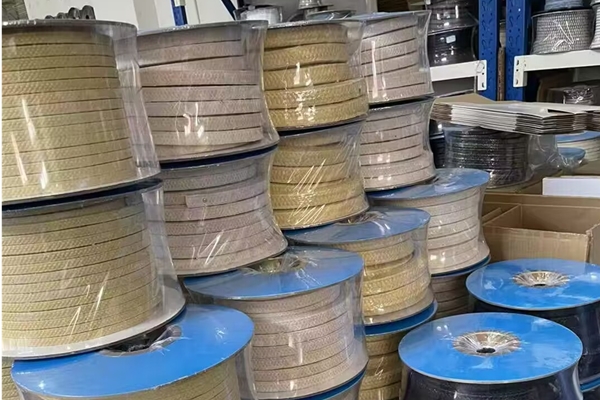Expanded PTFE (ePTFE) gaskets, also known as expanded PTFE sheets, are made by expanding polytetrafluoroethylene (PTFE) into a gasket material. With a strong internal multi-directional fiber structure, ePTFE gaskets offer superior resistance to cold flow and creep, significantly enhancing their failure resistance. These gaskets are widely used in various industries, including petrochemical, chemical processing, pharmaceuticals, and food, for sealing applications on flanges, heat exchangers, large containers, pump mounts, and manhole covers.
Key Performance Advantages of Expanded PTFE Gaskets:
- Strong Environmental AdaptabilityExpanded PTFE gaskets are highly adaptable, with safe usage across temperatures from -200°C to 315°C. They are resistant to most chemicals (except for molten alkali metals and free fluorine atoms) across a pH range of 0–14. Withstanding internal pressures up to 20 MPa and compliant with FDA/Rohs regulations, they are ideal for industries requiring non-toxic, non-carcinogenic, non-allergenic, and contaminant-free sealing solutions, such as food, brewing, feed, and pharmaceuticals.
- Outstanding Compressibility and Resilience for Superior SealingExpanded PTFE gaskets are highly compressible, with a typical compression ratio of 55% to 80%, enabling them to effectively fill cracks, surface irregularities, voids, and grooves at the sealing interface to prevent leakage. Additionally, they exhibit a recovery rate of 15% to 20% under tension. This elasticity enhances the sealing force as internal pressure increases, making ePTFE gaskets highly effective for reliable interface sealing.
- Convenient and Easy HandlingSoft and easy to cut, Expanded PTFE gaskets can be tailored with either machinery or hand tools, facilitating installation. By cutting the required length, simply overlap the two ends to create a gasket of any size. When installed, external force compresses and entangles the internal fibers, allowing the gasket to conform to the constraints of pressure and space, minimizing the risk of leaks. This adaptability is particularly advantageous for sealing vertical flanges and suspended pipelines. Additionally, it extends the flange’s lifespan without needing additional clamping force.
- Corrosion and Aging ResistanceExpanded PTFE gaskets not only inherit PTFE’s chemical resistance and non-aging properties but also gain excellent resistance to creep and cold flow. With safe, long-term use across a wide temperature range (-200°C to 315°C), their operational lifespan is more than seven times that of typical rubber or plastic sealing products.
- Clean and Non-ContaminatingMade from pure PTFE, Expanded PTFE gaskets are clean, non-toxic, and resistant to aging, preventing any cross-contamination. They effectively protect the purity of the medium while keeping contact surfaces, such as flanges and pump equipment, clean.
- Cost-Effective and PracticalExpanded PTFE gaskets require no pre-forming and can be shaped directly on-site to fit specific sealing surfaces. Using mechanical or manual cutting, they can be shaped into gaskets of any diameter, cross-section, or shape, reducing the need for pre-designed formats and cutting down on design costs. This flexibility also simplifies procurement and inventory, lowering inventory and purchasing costs. In low-pressure applications, depending on the gasket’s condition, ePTFE gaskets can be reused multiple times.
- Excellent Mechanical CompensationWith a fine, bi-directional fiber structure, Expanded PTFE gaskets are soft and expandable before applying force, offering high elasticity. Once compressed, the internal fibers interlock and compress according to external pressure and spatial constraints, forming a solid, balanced, and impermeable structure. This molecular structure gives ePTFE gaskets excellent compressibility (compression ratios up to 55%-80%) and resilience (15%-20% recovery), allowing them to fill irregular sealing surfaces effectively. They also offer mechanical compensation for contact surfaces with low machining precision, rust, scratches, erosion, or wear.




